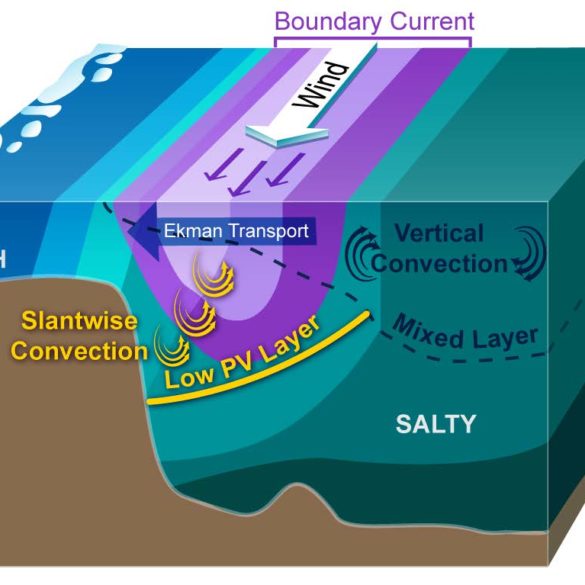Le Bras, I. a.-A., Callies, J., Straneo, F., Biló, T. C., Holte, J., & Johnson, H. L., 2022. Slantwise Convection in the Irminger Sea. Journal of Geophysical Research, Oceans, 127(10), e2022JC019071. https://doi.org/10.1029/2022JC019071

Image provided by Isabela Le Bras
The subpolar North Atlantic is a site of significant carbon dioxide, oxygen, and heat exchange with the atmosphere. This exchange, which regulates transient climate change and prevents large-scale hypoxia throughout the North Atlantic, is thought to be mediated by vertical mixing in the ocean’s surface mixed layer. Here we present observational evidence that waters deeper than the conventionally defined mixed layer are affected directly by atmospheric forcing in this region. When northerly winds blow along the Irminger Sea’s western boundary current, the Ekman response pushes denser water over lighter water, potentially triggering slantwise convection. In the above schematic, the core of the boundary current is shown in purple, and the across-shore density gradient is represented by the transition from blue to green. Winds blowing in the same direction as the boundary current push salty, denser water over fresh, lighter water through the Ekman response. This triggers slantwise convection, which mixes water along slanted paths and creates a low-PV (potential vorticity) layer that is several times deeper than the mixed layer in the boundary current. The unstratified mixed layer, formed via cooling and upright convection, is deeper offshore.
